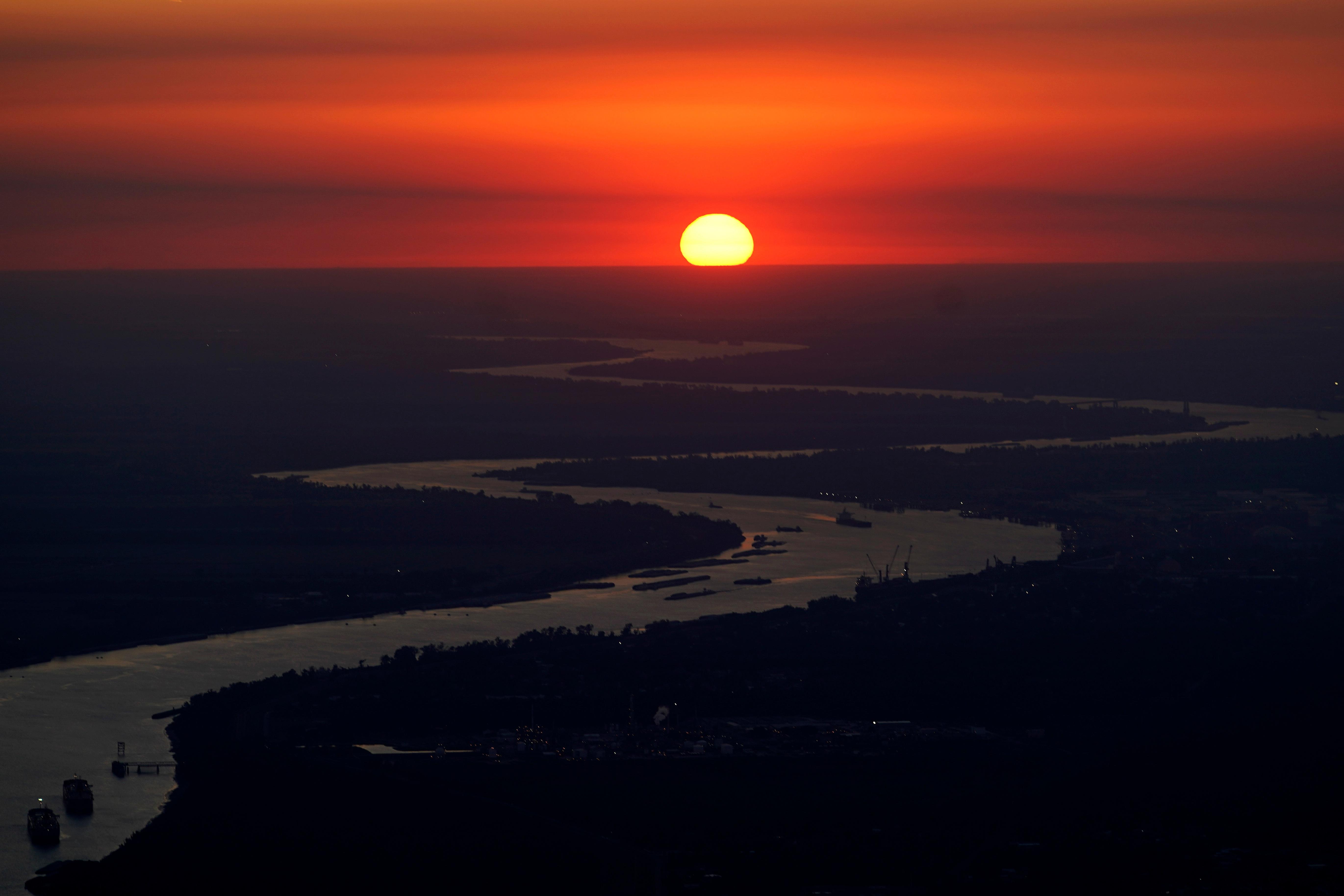Typically, the waters off coastal Louisiana and Mississippi alone face the greatest impacts.
The northern Gulf has long struggled with large, seemingly perennial hypoxic zones, although the largest and best known is located in waters west of Louisiana.
But researchers at Louisiana State University last month encountered a sizable dead zone to the east of the Mississippi River Delta, stretching west from the Chandeleur Islands to Mobile Bay – just south of the Mississippi Sound.
In these areas, levels of dissolved oxygen reach such low levels that aquatic species can’t survive, and other species who feed on them relocate elsewhere.
According to the researchers’ report, compiled through a data gathering trip in late July, roughly 1,634 square miles were experiencing hypoxic conditions. However, the team believes the dead zone likely extends even further east, past Mobile Bay.
Kim de Mustert, an associate professor of coastal sciences at the University of Southern Mississippi, says dead zones often fluctuate both in size and location, and sometimes seasonally.
But in the Northern Gulf, the main factor is the Mississippi River.
“When fresh water comes in, that brings nutrients into an estuary. Algae grow on these nutrients, and when they sink and die, bacteria decompose that organic matter. That takes the oxygen out of the water and that creates these hypoxic zones,” de Mustert said.
The worst impacts are felt by species like oysters, which live on the bottom -- as well as the many species that feed on bottom-dwellers.
“It's still hard to really quantify the impacts. It could be that they eat less and we see effects on growth rates of different species. If that is a fishery such as brown and white shrimp, smaller shrimps are economically less valuable than larger shrimp and there can be less larger shrimp. So the price of larger shrimp can be driven up,” said de Mustert.
“Additionally, the relocation of fish and shellfish can make the boating time longer for shrimp boats. And generally, when certain organisms in the food web are affected, those species that eat those benthic organisms can be affected as well. So we see shifts in diets, and that could affect a species like red snapper as well that feed on benthic invertebrates.”
Now more than five years after the most recent ecological disaster afflicted the Mississippi Sound, some along the Coast warn the Eastern Gulf dead zone could present even more challenges to the estuary's many fisheries, and the industries it supports.
Beginning in Feb. 2019, after a winter of record rainfall and snowmelt, an estimated six trillion gallons of Mississippi River water flowed into the Mississippi Sound after being redirected just north of New Orleans, via the Bonnet Carre Spillway.
That resulted in the near-destruction of Mississippi’s historic and once bountiful wild oyster harvest, especially in coastal communities like Pass Christian and Bay St. Louis, which haven’t experienced an oyster harvest since 2018.
“I've had students using an experimental design in the lab where they have lowered oxygen in tanks to look at how long oysters can actually withstand these low oxygen conditions before they perish,” de Muster said.
“Oysters do have the capability of surviving certain periods of no oxygen. And what we've found in the lab is that low oxygen is something they can handle, but no oxygen, for the few tests that we did, maybe only for 14 days or so. So it does end at some point.”
In a similar vein to de Mustert’s concerns with the current dead zone, shrimpers from Gulfport and Bilxoi were forced to travel much further for their catch, as well as charter captains in pursuit of redfish or snapper.
As a collective whole, much of coastal Mississippi’s commercial fishing industry – and countless others who rely on it – are still devoting time to recovering and redefining the economy post-2019. Some of those efforts include attempts to re-cultivate oyster reefs throughout the Sound – a task made more difficult by a growing hypoxic zone.
But de Mustert says efforts have to be made upstream to prevent agricultural nutrients and other pollutants from making their way into the northern Gulf.
“We can't always help how much water is coming out of the river – It's more of an effect of weather and how much rain is falling in the watershed. But we should be able to control the amount of nutrients coming out of the river,” she said.
“Investing money into reducing the amount of nutrients that get into the river from the watersheds is really the way to go to have some control over the size of these hypoxic zones we see in the Gulf of Mexico.”




